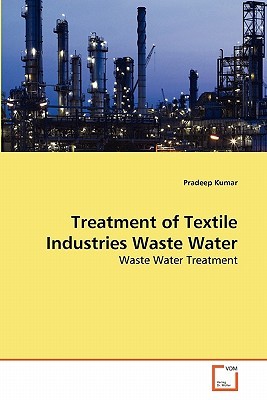
- We will send in 10–14 business days.
- Author: Pradeep Kumar
- Publisher: VDM Verlag
- ISBN-10: 3639283074
- ISBN-13: 9783639283075
- Format: 15.2 x 22.9 x 1.5 cm, softcover
- Language: English
- SAVE -10% with code: EXTRA
Reviews
Description
The removal of color from textile mill waste water is of great environmental concern. More than half of the nearly 90 dyestuffs used in textile mills (e.g. reactive blue 21, direct blue 80 and vat violet etc. at specific COD/BOD ratios) are non-biodegradable.Among the various treatment methods, catalytic thermolysis (thermal treatment) and coagulation are the most promising ones. Thermolysis is a chemical process by which a substance is decomposed in to other substances by use of heat. During catalytic thermolysis, two mechanisms, both in parallel but complementary to each other, take place simultaneously. The organic molecules, both small and large, present in the effluent undergo chemical and thermal breakdown and complexation, forming insoluble particles, which settle down. Further, during thermolysis larger molecules also undergo breakdown into smaller molecules, which are soluble.
EXTRA 10 % discount with code: EXTRA
The promotion ends in 20d.18:41:27
The discount code is valid when purchasing from 10 €. Discounts do not stack.
- Author: Pradeep Kumar
- Publisher: VDM Verlag
- ISBN-10: 3639283074
- ISBN-13: 9783639283075
- Format: 15.2 x 22.9 x 1.5 cm, softcover
- Language: English English
The removal of color from textile mill waste water is of great environmental concern. More than half of the nearly 90 dyestuffs used in textile mills (e.g. reactive blue 21, direct blue 80 and vat violet etc. at specific COD/BOD ratios) are non-biodegradable.Among the various treatment methods, catalytic thermolysis (thermal treatment) and coagulation are the most promising ones. Thermolysis is a chemical process by which a substance is decomposed in to other substances by use of heat. During catalytic thermolysis, two mechanisms, both in parallel but complementary to each other, take place simultaneously. The organic molecules, both small and large, present in the effluent undergo chemical and thermal breakdown and complexation, forming insoluble particles, which settle down. Further, during thermolysis larger molecules also undergo breakdown into smaller molecules, which are soluble.


Reviews